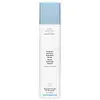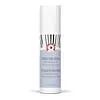What's inside
What's inside
 Key Ingredients
Key Ingredients

 Benefits
Benefits

 Concerns
Concerns

No concerns
 Ingredients Side-by-side
Ingredients Side-by-side

Water
Skin ConditioningCoconut Alkanes
EmollientAmmonium Acryloyldimethyltaurate/Vp Copolymer
Glycerin
HumectantPentylene Glycol
Skin ConditioningSclerocarya Birrea Seed Oil
HumectantWheat Amino Acids
Skin ConditioningAnanas Sativus Fruit Extract
Skin ConditioningBerberis Vulgaris Root Extract
AntimicrobialCitrullus Lanatus Fruit Extract
Skin ConditioningLens Esculenta Fruit Extract
Skin ConditioningPyrus Malus Fruit Extract
Skin ConditioningCoco-Caprylate/Caprate
EmollientPanthenol
Skin ConditioningSodium PCA
HumectantSodium Hyaluronate Crosspolymer
HumectantDipotassium Glycyrrhizate
HumectantNiacinamide
SmoothingCyclodextrin
AbsorbentSodium Hyaluronate
HumectantSodium Lactate
BufferingPhenoxyethanol
PreservativeHydroxyproline
Skin ConditioningTrisodium Ethylenediamine Disuccinate
Citric Acid
BufferingCaprylyl Glycol
EmollientChlorphenesin
AntimicrobialEthylhexylglycerin
Skin ConditioningWater, Coconut Alkanes, Ammonium Acryloyldimethyltaurate/Vp Copolymer, Glycerin, Pentylene Glycol, Sclerocarya Birrea Seed Oil, Wheat Amino Acids, Ananas Sativus Fruit Extract, Berberis Vulgaris Root Extract, Citrullus Lanatus Fruit Extract, Lens Esculenta Fruit Extract, Pyrus Malus Fruit Extract, Coco-Caprylate/Caprate, Panthenol, Sodium PCA, Sodium Hyaluronate Crosspolymer, Dipotassium Glycyrrhizate, Niacinamide, Cyclodextrin, Sodium Hyaluronate, Sodium Lactate, Phenoxyethanol, Hydroxyproline, Trisodium Ethylenediamine Disuccinate, Citric Acid, Caprylyl Glycol, Chlorphenesin, Ethylhexylglycerin
Water
Skin ConditioningGlycerin
HumectantGlycereth-26
HumectantSqualane
EmollientSodium Hyaluronate
HumectantSoluble Collagen
HumectantColloidal Oatmeal
AbsorbentPanthenol
Skin ConditioningChrysanthemum Parthenium Extract
Skin ConditioningCamellia Sinensis Leaf Extract
AntimicrobialGlycyrrhiza Glabra Root Extract
BleachingAllantoin
Skin ConditioningEthylhexylglycerin
Skin ConditioningSorbitan Oleate
EmulsifyingAcrylates/C10-30 Alkyl Acrylate Crosspolymer
Emulsion StabilisingSodium PCA
HumectantPhenoxyethanol
PreservativeSodium Hydroxide
BufferingPotassium Sorbate
PreservativeSodium Benzoate
MaskingTetrasodium EDTA
Water, Glycerin, Glycereth-26, Squalane, Sodium Hyaluronate, Soluble Collagen, Colloidal Oatmeal, Panthenol, Chrysanthemum Parthenium Extract, Camellia Sinensis Leaf Extract, Glycyrrhiza Glabra Root Extract, Allantoin, Ethylhexylglycerin, Sorbitan Oleate, Acrylates/C10-30 Alkyl Acrylate Crosspolymer, Sodium PCA, Phenoxyethanol, Sodium Hydroxide, Potassium Sorbate, Sodium Benzoate, Tetrasodium EDTA
 Reviews
Reviews

Ingredients Explained
These ingredients are found in both products.
Ingredients higher up in an ingredient list are typically present in a larger amount.
Ethylhexylglycerin (we can't pronounce this either) is commonly used as a preservative and skin softener. It is derived from glyceryl.
You might see Ethylhexylglycerin often paired with other preservatives such as phenoxyethanol. Ethylhexylglycerin has been found to increase the effectiveness of these other preservatives.
Glycerin is already naturally found in your skin. It helps moisturize and protect your skin.
A study from 2016 found glycerin to be more effective as a humectant than AHAs and hyaluronic acid.
As a humectant, it helps the skin stay hydrated by pulling moisture to your skin. The low molecular weight of glycerin allows it to pull moisture into the deeper layers of your skin.
Hydrated skin improves your skin barrier; Your skin barrier helps protect against irritants and bacteria.
Glycerin has also been found to have antimicrobial and antiviral properties. Due to these properties, glycerin is often used in wound and burn treatments.
In cosmetics, glycerin is usually derived from plants such as soybean or palm. However, it can also be sourced from animals, such as tallow or animal fat.
This ingredient is organic, colorless, odorless, and non-toxic.
Glycerin is the name for this ingredient in American English. British English uses Glycerol/Glycerine.
Learn more about GlycerinPanthenol is a common ingredient that helps hydrate and soothe the skin. It is found naturally in our skin and hair.
There are two forms of panthenol: D and L.
D-panthenol is also known as dexpanthenol. Most cosmetics use dexpanthenol or a mixture of D and L-panthenol.
Panthenol is famous due to its ability to go deeper into the skin's layers. Using this ingredient has numerous pros (and no cons):
Like hyaluronic acid, panthenol is a humectant. Humectants are able to bind and hold large amounts of water to keep skin hydrated.
This ingredient works well for wound healing. It works by increasing tissue in the wound and helps close open wounds.
Once oxidized, panthenol converts to pantothenic acid. Panthothenic acid is found in all living cells.
This ingredient is also referred to as pro-vitamin B5.
Learn more about PanthenolPhenoxyethanol is a preservative that has germicide, antimicrobial, and aromatic properties. Studies show that phenoxyethanol can prevent microbial growth. By itself, it has a scent that is similar to that of a rose.
It's often used in formulations along with Caprylyl Glycol to preserve the shelf life of products.
Sodium Hyaluronate is hyaluronic acid's salt form. It is commonly derived from the sodium salt of hyaluronic acid.
Like hyaluronic acid, it is great at holding water and acts as a humectant. This makes it a great skin hydrating ingredient.
Sodium Hyaluronate is naturally occurring in our bodies and is mostly found in eye fluid and joints.
These are some other common types of Hyaluronic Acid:
Learn more about Sodium HyaluronateSodium PCA is the sodium salt of pyroglutamic acid. It is naturally occurring in our skin's natural moisturizing factors where it works to maintain hydration.
The PCA stands for pyrrolidone carboxylic acid, a natural amino acid derivative.
This ingredient has skin conditioning, anti-inflammatory, and humectant properties. Humectants help hydrate your skin by drawing moisture from the air. This helps keep your skin moisturized.
Learn more about Sodium PCAWater. It's the most common cosmetic ingredient of all. You'll usually see it at the top of ingredient lists, meaning that it makes up the largest part of the product.
So why is it so popular? Water most often acts as a solvent - this means that it helps dissolve other ingredients into the formulation.
You'll also recognize water as that liquid we all need to stay alive. If you see this, drink a glass of water. Stay hydrated!
Learn more about Water